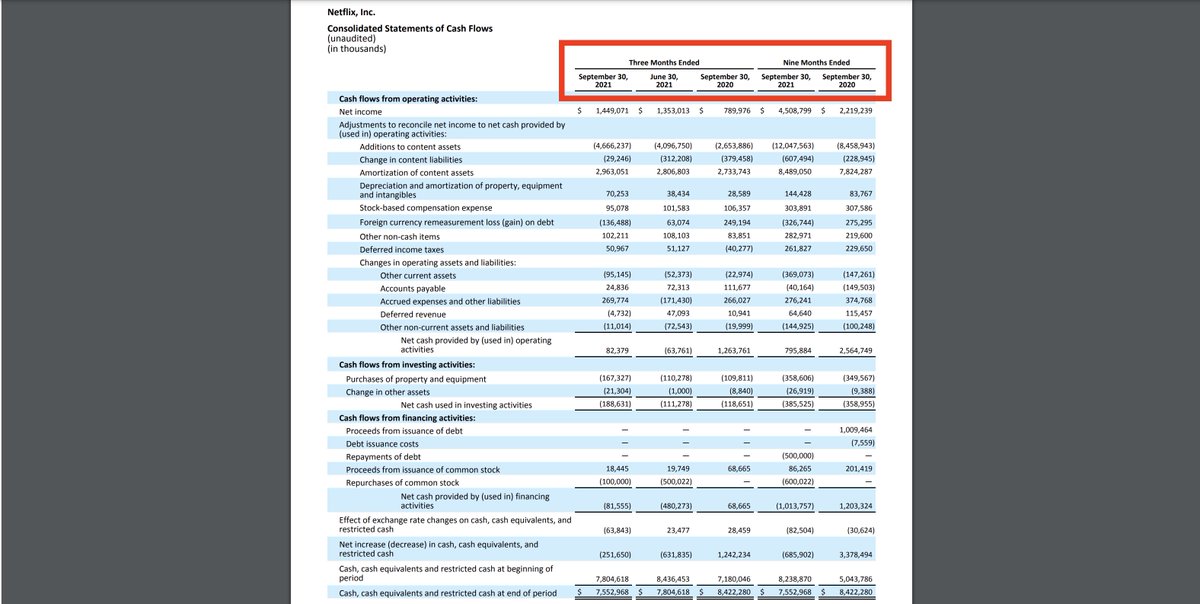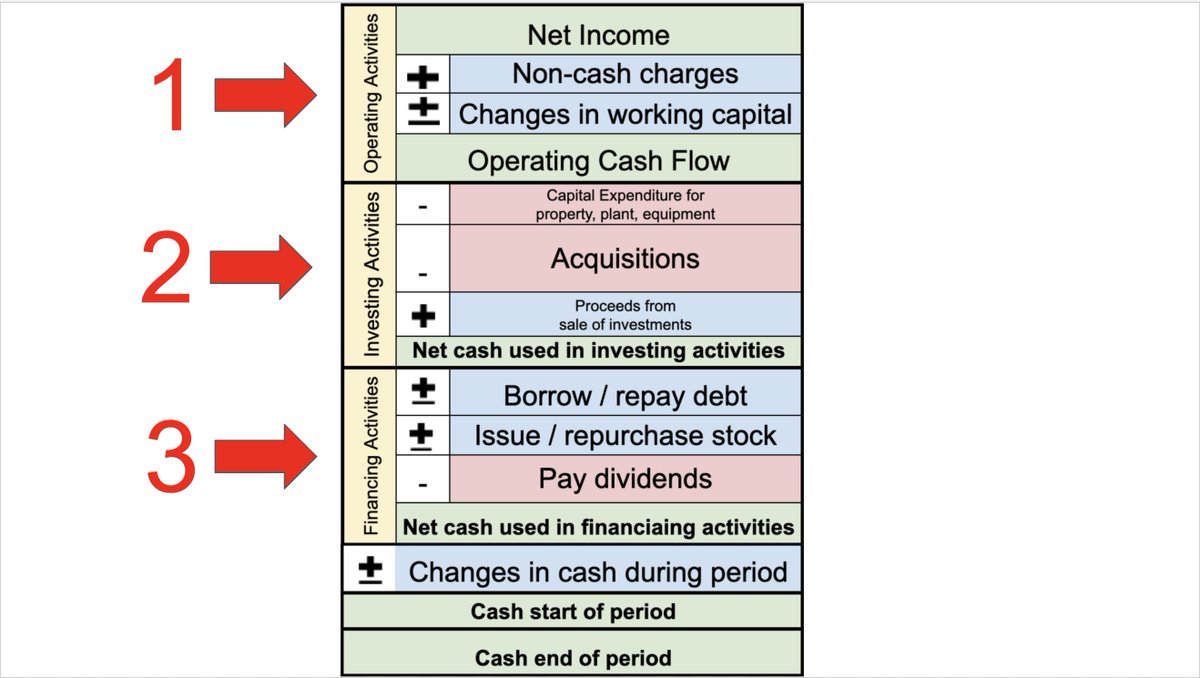The most common time periods are:
▪️1 Quarter
▪️1 Year
▪️Year-to-date (usually 6 or 9 months)
The time period is at the top. Here's $NFLX recent cash flow statement time period.












Accounting is the language of business.
— Brian Feroldi (@BrianFeroldi) July 28, 2021
If you buy stocks, you MUST learn how to read an income statement
Here\u2019s everything you need to know:
Accounting is the language of business.
— Brian Feroldi (@BrianFeroldi) September 30, 2021
If you buy stocks, you MUST learn how to read a balance sheet.
Here\u2019s everything you need to know:
1/
— 10-K Diver (@10kdiver) April 10, 2021
Get a cup of coffee.
In this thread, I'll walk you through the basics of leverage -- in our personal lives and in the companies we invest in. pic.twitter.com/9MilmwE9f7
20 semi-controversial investing beliefs [THREAD]:
— Aaron Bush (@aaronbush100) May 24, 2020
The most dangerous category of poor decisions are ones that remain easily hidden from view because any instance of that type of decision is so easy to rationalize.
— Annie Duke (@AnnieDuke) October 7, 2020
1/12
This is a story about how I lost $10,000,000 by doing something stupid.
— Andrew Wilkinson (@awilkinson) March 30, 2021
Ten. Million. Dollars.
Literally up in smoke. Money bonfire.
That\u2019s enough to retire with $250,000+ in annual income.
Here\u2019s what happened\u2026
Happy Monday everyone :-) Let's ring in September by reacquainting ourselves with Virginia neo-Nazi and NSC Dixie affiliate Sayed "Robbie" Javid, now known by "Reform the States". Robbie is an explicitly genocidal neo-Nazi, so lets get to know him a bit better!
— Garfield but Anti-Fascist (@AntifaGarfield) August 31, 2020
CW on this thread pic.twitter.com/3gzxrIo9HD

As someone\u2019s who\u2019s read the book, this review strikes me as tremendously unfair. It mostly faults Adler for not writing the book the reviewer wishes he had! https://t.co/pqpt5Ziivj
— Teresa M. Bejan (@tmbejan) January 12, 2021
I am quite different from your style. I follow the market's volatility very closely. I have mock positions in 7-8 different strategies which allows me to stay connected. Whichever gives best profit is usually the one i trade in.
— Sarang Sood (@SarangSood) August 13, 2019
Anilji most of the time these days Theta only falls when market moves. So the Theta actually falls where market has moved to, not where our position was in the first place. By shifting we can come close to capturing the Theta fall but not always.
— Sarang Sood (@SarangSood) June 24, 2019
This week has been great so far. The main aim is to be in the right side of the volatility, rest the market will reward.
— Sarang Sood (@SarangSood) July 3, 2019
There is a difference between theta decay & fall in vega. Decay is certain but there is no guaranteed profit as delta moves can increase cost. Fall in vega on the other hand is backed by a powerful force that sells options and gives handsome returns. Our job is to identify them.
— Sarang Sood (@SarangSood) February 12, 2020